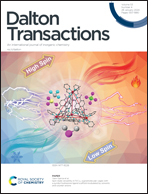An Fe3+ induced etching and hydrolysis precipitation strategy affords an Fe–Co hydroxide nanotube array toward hybrid water electrolysis†
Abstract
Developing advanced electrocatalysts toward the oxygen evolution reaction (OER) has always been recognized as the key challenge for green hydrogen production via water electrolysis due to the commonly required high OER overpotential. In this work, we report a branched FeCo-based hydroxide nanotube array (Fe–CoCH NT) synthesized by an ambient Fe-modification strategy, which could be used as a monolithic electrode for efficient OER catalysis. Its OER performance was even comparable to that of RuO2 with a low overpotential of 290 mV to attain a current density of 10 mA cm−2 due to its unique branched nanotube array structure and intrinsic high catalytic activity. Moreover, an acid–base hybrid electrolysis system was built based on this catalyst and an FeCo-based phosphide nanotube array electrode. By collecting electrochemical neutralization energy, this system just needs an ultralow cell voltage of 0.97 V to attain a current density of 10 mA cm−2 with a large decrease in energy consumption of 41.9% compared to traditional alkaline water splitting systems.



 Please wait while we load your content...
Please wait while we load your content...